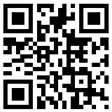Indirect plate making method: the indirect film is first exposed, hardened with 1.2% H2O2, developed with warm water, and dried to make a strippable graphic negative. During plate making, the adhesive film surface of the graphic negative is closely attached to the stretched screen, the adhesive film is tightly attached to the wet screen by extrusion, the film base is removed, and the screen is dried by wind. Process flow: 1. Stretched wire mesh - degreasing - drying. 2 Indirect film - exposure - hardening - development - fitting - drying - revision - blocking. 3 Straight mixed plate making method: first, paste the photosensitive adhesive layer on the screen frame with water, alcohol or photosensitive adhesive, dry it with hot air, remove the substrate of the photosensitive film, and then print the plate. After developing, the screen plate is made.

Width detection: the tolerance of webbing with width of 1 "and above shall not exceed ± 0.25 points; The tolerance of webbing with width of 25MM and above shall not exceed ± 0.5MM; The standard tolerance of webbing width of 1 "and less than 25MM shall not exceed ± 0.25MM; Note: The flat end and herringbone edging webbing must be of sufficient size, but not more than 0.25 points. Thickness inspection: the tolerance shall not exceed ± 0.1MM; Color difference test: there is no yin and yang color on the belt surface by naked eye, and the needle edge and cloth edge cannot be exchanged for the color and texture (the needle edge of each woven belt must be of one color). Singeing and labeling: Each bag ribbon must be singed thoroughly, but cannot be burnt. The quality inspector shall inspect the packaging label to be consistent with the actual goods (specification, color, quantity), and seal it for warehousing. If errors and omissions are found, the relevant processes shall be traced in time, and the relevant personnel shall be held accountable according to the seriousness of the case.

Flat screen printing. The printing mould is a polyester or nylon screen (pattern) fixed on a square frame with hollow patterns. The pattern on the pattern plate can pass through the color paste, and the mesh without pattern can be sealed with a polymer film. When printing, the pattern is pressed against the fabric, and the color paste is placed on the pattern. The scraper is used to repeatedly scrape and press the color paste to reach the fabric surface through the pattern. Flat screen printing has low production efficiency, but wide adaptability and flexible application, suitable for small batch and multi variety production. Water slurry printing of bag webbing.

customized Single and double layer webbing Manufacturer Not only the production process is complex, but also the packaging process is very complicated. Only the webbing that has passed the inspection can be packaged out of the warehouse, otherwise it will be treated as defective products. Liaoning customized Single and double layer webbing Manufacturer The specific packaging process is as follows: 1. The process control method: 1. The surface of each winding tape must be smooth and flat (except for special webbing); Those who cannot be involved in substandard products shall be held accountable according to the seriousness of the case. Knot: ≤ 3/100Y, ≤ 2/50Y; Short code: ± 0.5/100Y; Each knapsack strap must have the label of the tape coiler. Inspection according to the customer's requirements: for example, 336, 217, 115, 314, 108, 114, 384, 206, 419, 122 adhesive paper and rubber hose, no pins can be used;

In this business, there is no doubt that the quotation is very important. I think many colleagues who make webbing are very familiar with their own products and can quote their own prices when they get their own products. If you come across a ribbon that is not made by yourself, can you quote an accurate price? I think it is impossible. Here is a brief introduction to how to quote an accurate price for a ribbon. First of all, the customer needs to understand this ribbon and be able to answer any question clearly.

The narrow Shenzhen ribbon or tubular fabric is made from various yarns. There are many kinds of belt fabrics, which are widely used in clothing, shoes, bags, industry, agriculture, military supplies, transportation and other industrial sectors. In the 1930s, it was all handmade workshops that produced exquisite pictures of ribbons. The raw materials were cotton thread and hemp thread. After the founding of the People's Republic of China, the raw materials for ribbon gradually developed to nylon, vinylon, polyester, polypropylene, spandex, viscose, etc., forming three major types of technology: weaving, knitting, knitting. The fabric structure includes plain weave, twill, satin, jacquard, double-layer, multi-layer, tubular and combined weave.






